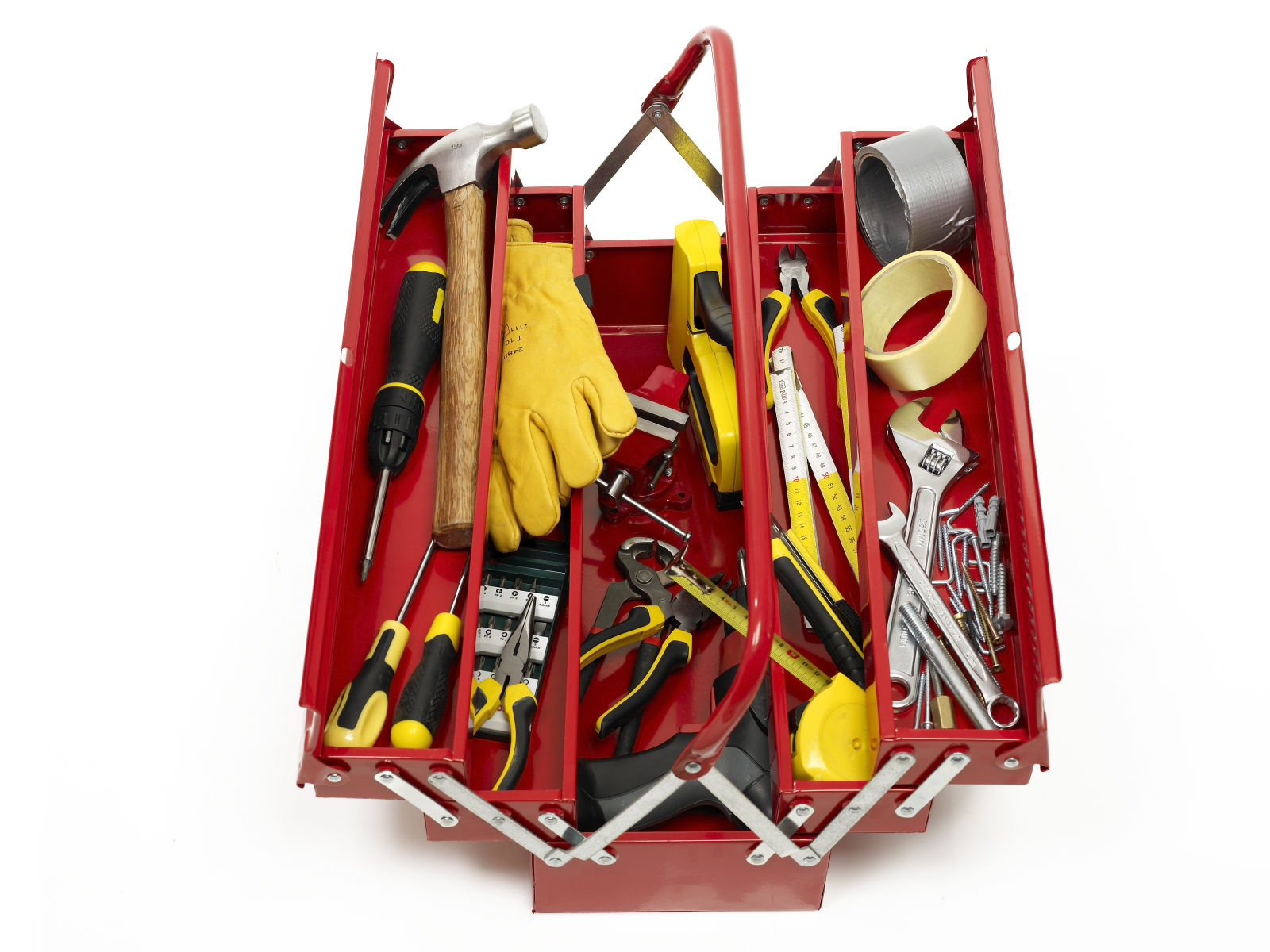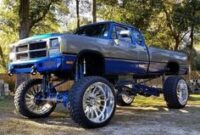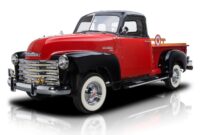Toolbox For Pickup Trucks: Your Ultimate Guide to Organization, Security, and Efficiency pickup.truckstrend.com
For many pickup truck owners, their vehicle is more than just a mode of transport; it’s a mobile workshop, an adventure companion, or a vital tool for their livelihood. Whether you’re a contractor hauling tools to a job site, a weekend warrior carrying recovery gear, or a DIY enthusiast transporting supplies, the challenge of keeping your equipment organized, secure, and protected from the elements is universal. This is where the unsung hero of the truck bed comes into play: the Toolbox For Pickup Trucks.
A toolbox for a pickup truck is more than just a container; it’s an essential accessory designed to maximize your truck’s utility, transform chaos into order, and provide peace of mind. It offers a dedicated, weather-resistant, and lockable space for everything from wrenches and drills to tow straps and emergency kits, ensuring your valuable gear is always within reach and safe from theft or damage. In this comprehensive guide, we’ll delve into everything you need to know about choosing, installing, and maintaining the perfect toolbox for your pickup truck, turning your vehicle into an even more capable and efficient machine.
Toolbox For Pickup Trucks: Your Ultimate Guide to Organization, Security, and Efficiency
The Indispensable Role of a Pickup Truck Toolbox
The importance of a well-chosen toolbox for your pickup truck cannot be overstated. It addresses several critical needs for truck owners:
- Superior Organization: Say goodbye to rummaging through a cluttered truck bed. Toolboxes offer compartmentalized storage, often with removable trays and dividers, allowing you to categorize and quickly access your tools and equipment. This saves time and reduces frustration on the job or during an emergency.
- Enhanced Security: Tools and equipment represent a significant investment. Most truck toolboxes come with robust locking mechanisms, deterring theft and keeping your valuables safe, whether your truck is parked on a job site or in your driveway.
- Weather Protection: Rain, snow, dust, and harsh sunlight can damage sensitive tools and equipment. High-quality toolboxes are designed with weather-sealed lids and durable materials to protect your gear from the elements, prolonging their lifespan and maintaining their functionality.
- Maximized Bed Space: While they occupy a portion of the truck bed, many toolbox designs, especially crossover and side-mount boxes, are engineered to optimize space utilization. They keep smaller items contained, freeing up the rest of the bed for larger cargo.
- Convenience and Accessibility: With a toolbox, your essential gear is always onboard and readily accessible. No more forgetting tools at home or making extra trips. It’s about being prepared for any situation, anytime, anywhere.

Diverse Types of Pickup Truck Toolboxes
The market offers a wide array of toolbox designs, each catering to different needs, truck configurations, and storage preferences. Understanding these types is the first step in choosing the right one for you:

Crossover (Saddle) Boxes:
- Description: The most popular type, these boxes span the width of the truck bed, sitting behind the cab and resting on the bed rails. They typically have a single, long lid that opens from the top.
- Pros: Excellent storage capacity, easy access from either side of the truck, leaves the majority of the bed floor open for long items.
- Cons: Can obstruct rear window visibility for some drivers, takes up significant space at the front of the bed.

-
Side-Mount (Lo-Side) Boxes:
- Description: These boxes run along the side rails of the truck bed, mounted either flush with the rail or slightly below it. They are usually sold individually or in pairs.
- Pros: Maintains full bed floor access, ideal for storing smaller, frequently used tools, excellent for organization.
- Cons: Less overall storage capacity than crossover boxes, can be slightly harder to access from the ground without stepping up.
-
Wheel Well Boxes:
- Description: Designed to fit over or around the rear wheel wells, utilizing otherwise wasted space. They often have a compact, irregular shape.
- Pros: Maximizes often-unused space, keeps the main bed floor clear, good for small, essential items.
- Cons: Limited storage capacity, specific fitment required for each truck model.
-
Chest Boxes:
- Description: These are rectangular boxes designed to sit directly on the truck bed floor, usually placed against the cab or tailgate. They open from the top.
- Pros: Very secure when bolted down, offers substantial storage capacity, can be moved more easily if not bolted.
- Cons: Occupies significant bed floor space, requires reaching over the side or climbing into the bed for access.
-
Underbody (Under-Mount) Boxes:
- Description: Mounted beneath the truck bed, usually between the frame rails, these boxes are common on flatbeds or trucks with custom bodies.
- Pros: Completely frees up bed space, excellent for storing straps, chains, or emergency gear out of sight.
- Cons: Requires specific mounting solutions, limited capacity, less accessible than in-bed options.
-
Drawer Systems:
- Description: These are more sophisticated setups that create a raised false floor in the truck bed with multiple pull-out drawers.
- Pros: Unparalleled organization, very secure, maintains a flat surface on top for loading other items.
- Cons: High cost, significantly reduces vertical bed space, heavy.
Common Materials:
- Aluminum: Lightweight, rust-resistant, good strength-to-weight ratio. Often features a diamond plate finish.
- Steel: Very strong and durable, but heavier and susceptible to rust if not properly coated.
- Plastic/Polyethylene: Most affordable, lightweight, rust-proof. Less durable against heavy impacts or theft attempts than metal.
Key Considerations When Choosing Your Toolbox
Selecting the ideal toolbox involves balancing your specific needs with various practical factors:
-
Truck Bed Size and Fitment:
- Measure your truck bed dimensions carefully: width at the rails, length, and depth.
- Ensure the toolbox is compatible with your truck’s make, model, and year, especially for crossover and wheel well boxes.
- Consider bed liners or other accessories that might affect fit.
-
Material Durability and Weight:
- Aluminum: Best for general use, offers a good balance of durability and weight.
- Steel: Superior for heavy-duty use or if maximum security is a priority, but be mindful of the added weight impacting fuel economy and payload.
- Plastic: Suitable for light-duty use or budget-conscious buyers, but less secure.
-
Security Features:
- Look for robust lock mechanisms (e.g., push-button, paddle handle, or rotary latches).
- Ensure the hinges are strong and preferably concealed to prevent tampering.
- Consider models with multiple locking points for enhanced security.
-
Weatherproofing:
- Check for weather-sealed lids (rubber gaskets or bulb seals) to prevent water and dust intrusion.
- Ensure the lid closes tightly and securely.
-
Storage Capacity and Organization:
- Estimate the volume of tools and gear you need to store.
- Look for internal features like removable trays, dividers, and small parts bins to keep items organized.
- Consider if you need space for long items like levels or shovels.
-
Accessibility:
- How easily can you access the contents? Crossover boxes are great from the side, while chest boxes might require climbing into the bed.
- Gas struts on the lid can make opening and closing smoother and safer.
-
Installation Method:
- No-Drill Clamp Mounts: Many modern toolboxes use J-hooks or clamp systems that secure the box to the bed rails without drilling. This is convenient and preserves your truck’s resale value.
- Drill-In Mounting: More permanent and often more secure, but requires drilling holes in your truck bed.
-
Budget:
- Toolbox prices vary widely based on size, material, brand, and features. Set a budget but prioritize quality for longevity and security.
Practical Advice for Maximizing Your Toolbox Experience
- Categorize and Consolidate: Before buying, make a list of everything you plan to store. This helps determine the required size and organizational features.
- Layer Your Storage: Use the bottom of the toolbox for less frequently used or heavier items, and the top trays for frequently accessed tools and smaller parts.
- Labeling is Key: If you have multiple trays or compartments, consider labeling them for quick identification.
- Regular Maintenance: Keep your toolbox clean, especially the seals, to ensure weatherproofing. Lubricate hinges and locks periodically.
- Consider Add-ons: Some toolboxes offer accessory mounts for lights, tie-downs, or even small air compressors.
Installation and Maintenance Tips
Installation (General Steps):
- Read the Instructions: Always start by thoroughly reading the manufacturer’s installation guide.
- Position the Toolbox: Carefully place the toolbox in its desired location in the truck bed.
- Secure the Clamps/Mounts: If using no-drill clamps, position them according to instructions and tighten securely to the bed rails. If drilling, mark the holes, drill pilot holes, and then secure the box with the provided hardware.
- Check for Stability: Ensure the toolbox is level and stable, with no wobbling.
- Test the Lid and Locks: Verify that the lid opens and closes smoothly, and the locking mechanism functions correctly.
Maintenance:
- Clean Regularly: Wipe down the interior and exterior of the toolbox to prevent dirt and debris buildup.
- Inspect Seals: Periodically check the rubber seals around the lid for cracks or damage. Replace them if necessary to maintain weatherproofing.
- Lubricate Moving Parts: Apply a silicone-based lubricant to hinges, gas struts, and lock mechanisms to ensure smooth operation and prevent rust.
- Check Fasteners: Every few months, re-tighten any mounting bolts or clamps to ensure the toolbox remains securely attached.
- Address Rust Promptly: For steel toolboxes, touch up any scratches or chips in the paint to prevent rust from forming.
Potential Challenges and Solutions
- Limited Bed Space: If you need to haul long items frequently, a crossover box might obstruct too much space. Consider side-mount boxes, wheel well boxes, or a drawer system that maintains a flat surface above.
- Theft Concerns: While toolboxes offer security, determined thieves can breach them. For maximum security, opt for steel boxes with multiple, robust locking points. Consider parking in well-lit areas or installing additional security measures.
- Rust and Corrosion: Aluminum toolboxes are virtually rust-proof. For steel boxes, invest in models with durable powder coatings and perform regular maintenance to prevent rust.
- Weight Impact: A heavy steel toolbox, especially when loaded with tools, can add significant weight, affecting fuel economy and payload capacity. If weight is a major concern, opt for aluminum or plastic.
Toolbox For Pickup Trucks: Price Guide
Please note that prices are estimates and can vary significantly based on brand, material, specific features, and retailer. This table provides a general range for common toolbox types.
| Toolbox Type | Material Options | Key Features (Examples) | Typical Price Range ($USD) |
|---|---|---|---|
| Crossover (Saddle) | Aluminum, Steel, Plastic | Weather-sealed lid, gas struts, removable tray, lockable | $200 – $800+ |
| Side-Mount (Lo-Side) | Aluminum, Steel, Plastic | Single or dual lids, low profile, internal dividers | $150 – $600+ (per box) |
| Wheel Well Box | Aluminum, Plastic | Compact design, specific vehicle fit, quick access | $100 – $400+ (per box) |
| Chest Box | Aluminum, Steel, Plastic | Heavy-duty construction, large capacity, secure latch | $180 – $700+ |
| Underbody Box | Aluminum, Steel | Space-saving, weather-resistant, often side-opening | $150 – $500+ |
| Drawer System | Composite, Steel, Aluminum | Multiple pull-out drawers, integrated top platform | $800 – $2,500+ |
Frequently Asked Questions (FAQ) About Pickup Truck Toolboxes
Q1: Do I need to drill holes in my truck bed to install a toolbox?
A1: Not always. Many modern toolboxes come with "no-drill" clamp-on mounting systems that secure the box to the bed rails using J-hooks or similar clamps. However, some heavy-duty or older models may require drilling for a more permanent and secure installation. Always check the product specifications.
Q2: What’s the best material for a pickup truck toolbox?
A2: It depends on your needs.
- Aluminum: Best all-around for its light weight, rust resistance, and good durability.
- Steel: Best for maximum security and heavy-duty use, but heavier and prone to rust if not maintained.
- Plastic/Polyethylene: Most affordable and lightweight, rust-proof, but less durable and secure.
Q3: Will a toolbox affect my truck’s fuel economy?
A3: Yes, a toolbox, especially a heavy steel one, and its contents add weight to your truck. More weight generally leads to a slight decrease in fuel economy. Aerodynamics can also play a minor role if the box is tall and creates significant drag.
Q4: Can I easily remove my toolbox if I need the full bed space?
A4: Most clamp-on toolboxes can be removed relatively easily by loosening the clamps. This might take 5-15 minutes depending on the design. Bolt-in toolboxes are more permanent and removal is a more involved process.
Q5: How do I ensure my tools stay dry inside the toolbox?
A5: Look for toolboxes with robust weather seals (like rubber gaskets or bulb seals) around the lid. Ensure the lid closes tightly and the latch mechanism pulls it down firmly. Regularly inspect and clean these seals.
Q6: Will a toolbox fit all truck beds?
A6: No, toolboxes are sized specifically for different truck bed widths and lengths (e.g., full-size, mid-size, short bed, long bed). Always measure your truck bed and check the toolbox’s compatibility before purchasing.
Q7: Can I paint my toolbox to match my truck?
A7: Yes, many aluminum or steel toolboxes can be painted. For aluminum, you’ll need to properly clean, scuff, and prime the surface before applying automotive paint. For steel, ensure any rust is removed and the surface is prepped correctly.
Conclusion
A toolbox for your pickup truck is an investment that pays dividends in organization, security, and efficiency. It transforms your truck from a simple hauler into a meticulously organized mobile command center, ready for any task or adventure. By carefully considering the different types, materials, and features available, and by implementing smart maintenance practices, you can select the perfect toolbox that not only protects your valuable gear but also enhances the overall utility and enjoyment of your pickup truck. Choose wisely, and embrace the unparalleled convenience and peace of mind that comes with a well-equipped, organized truck bed.



